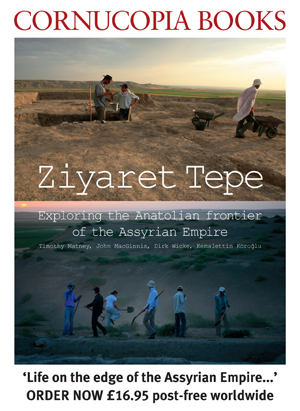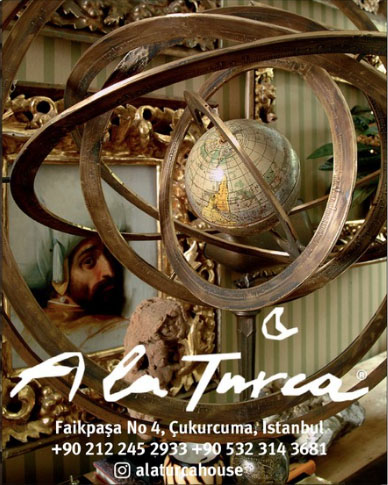The 51st İKSV Istanbul Music Festival continues. The third concert I attended was given by Anne-Sophie Mutter and Mutter’s Virtuosi at the Atatürk Cultural Centre (AKM) in Taksim Square on Tuesday, June 13. The programme consisted of baroque works by Vivaldi, JS Bach and Joseph Bologne, Chevalier de Saint-George, plus a modern piece by André Previn.
It was gratifying to see the concert hall (the Türk Telekom Opera Salonu) nearly full. Even more pleasing, only once did a ring tone make its presence felt.
After the screened introductory presentation, Ms Mutter – celebrating her 60th birthday on June 29 – was presented with a Lifetime Achievement Award. She is seen above, standing between Yeşim Gürer Oymak, deputy director general of the Istanbul Foundation for Culture and the Arts, (İKSV) and Efruz Çakırkaya, director of the Istanbul Music Festival (photo: Salih Üstundağ). She spoke of her foundation, which trains and supports young musicians. Her Mutter’s Virtuosi ensemble, in operation since 2011, is made up of past and present recipients of her foundation’s scholarships. She finished by emphasising the importance of music as a ‘training ground for life’, and its role as a provider of ‘emotional connection’ and a much-needed sense of community. (Her commitments in this direction are evidenced by her election to the Presidency of the ‘Deutsche Krebshilfe’ cancer charity in 2021.)
The first work performed was Antonio Vivaldi’s Concerto for 3 Violins in F major, RV 551, of which Andrew Lindemann Malone has this to say on the ‘AllMusic’ website:
The Concerto for 3 violins, strings and continuo in F major is often counted among Antonio Vivaldi’s more striking concerti; the profusion of his favourite solo instrument apparently inspired him to find fresh ways for the violins to interact and create exceptionally colourful textures using the interactions.
In using the term ‘continuo’, Mr Malone is referring to the instrument or instruments (usually a harpsichord, with or without a cello and/or a double bass) that provide the bass line and lay down the basic chords, thus releasing the other instruments ad/or singers from the task of fulfilling this duty. He goes on to say that the first movement is in 'ritornello form’ – another term frequently used in descriptions of baroque music. The Italian word ritornello actually means ‘little return’, and in a piece written to this formula the opening theme, with the main group of instruments all playing together (a group known as the ripieno), alternates with a variety of passages played by the soloist or soloists (the concertante group). The main thematic material is stated in full the first time it occurs; subsequently, it may be repeated either wholly or – more frequently – in part. Here is a link to the full article.
A good general outline of Vivaldi’s Concerto for 3 Violins, meanwhile, is given by the ‘American Bach Soloists’ website (unfortunately, the author is not named). The first page has some biographical background information, while the third has an account of the concerto itself. Here is a link.
In the performance at the Atatürk Cultural Centre, Ms Mutter played First Violin, with the Second and Third Violin parts played by Ms Agata Szymczewska and Ms Carla Marrero respectively. The ensemble created a very strong first impression: all three soloists were, as expected, excellent, and I awarded the ripieno group full marks for accuracy, intonation and musical diplomacy. By the third movement all the musicians had got well and truly into their stride, and their coordination remained faultless all through the rest of the concert.
In this recording, Vivaldi’s Concerto for 3 Violins in F major is played by the Israel Philharmonic Orchestra, conducted by Zubin Mehta. The three soloists are Dumitru Pocitari, Asaf Maoz and Semion Gavrikov.
Then came a welcome blast of Bach: his Violin Concerto No. 1 in A minor, BWV 1041, with Ms Mutter herself as soloist. There is controversy as to exactly when this work was written. Robin Stowell, in the Oxford Composer Companions, opines that it dates from Bach’s happy (and well-paid) time as kapellmeister – director of music – at the court of Leopold, Prince of Anhalt-Köthen, in the years 1717–23. The German musicologist Christoph Wolff and others, however, maintain it was written during the composer’s time as director of the Leipzig Collegium Musicum, a post he occupied from 1723 to 1750.
In the first paragraph of Howard Posner’s description of the piece on the ‘LA Phil’ website, he comes down on the side of the Köthen faction. The information in the second and third paragraphs is less controversial, however, and at one point he makes the following valuable observation:
... Bach extended the horizons of the violin as a ‘complete’ harmonic and contrapuntal instrument in his phenomenal unaccompanied partitas and sonatas – works that, if often unkind to the player, could not have been written by someone without a comprehensive working knowledge of the instrument.
The ‘good-music-guide’ website, meanwhile, has some useful information (in paragraphs 5 and 6) about the concerto as a form in Bach’s time. An added plus is that its description of the Violin Concerto No. 1 in A minor includes an explanation of the term ‘bariolage’ (a technique employed in the last movement).
This 1978 recording of the Bach concerto is by the celebrated Belgian violinist Arthur Grumiaux (1921–1986), considered by some to have been ‘one of the few truly great violin virtuosi of the twentieth century’ and noted for his ‘consistently beautiful tone and flawless intonation’. Here he is accompanied by Les Solistes Romands, conducted by Árpád Gérecz.
When NASA launched the unmanned Voyager 1 spacecraft in 1977, it included a Golden Record featuring a sampling of music from Earth. One of the recording’s excerpts is JS Bach’s Gavotte en rondeau from Partita No. 3 in E Major, performed by legendary Franco-Belgian violinist Arthur Grumiaux (1921–1986). Regarding the record, astronomer Carl Sagan said:
‘The spacecraft will be encountered and the record played only if there are advanced space-faring civilisations in interstellar space. But the launching of this ‘bottle’ into the cosmic ‘ocean’ says something very hopeful about life on this planet.’
The article on the ‘Listeners’ Club’ website (entitled ‘Grumiaux’s Cosmic Bach’) includes recordings by Arthur Grumiaux of the first and third movements of the above-mentioned Partita No. 3 in E major, BWV 1006.1.
The performance we heard on June 13 of Bach’s Violin Concerto No. 1 by Anne-Sophie Mutter and the Mutter’s Virtuosi was remarkable for two things. The first was the extreme quietness of the second movement, which was played pianissimo to the point of being inaudibilissimo. (It is no bad thing, of course, to make the audience strain forward in their seats to catch what is being played. It encourages them to be more attentive. I just hope those sitting in the top gallery could hear.) The second was the incisive quality of the soloist’s playing in the last movement. On this count I have no objection whatever: I positively enjoy having my ear ‘rinsed and wrung’ so long as the music is good and is played by someone as superlatively skilled as Ms Mutter indubitably is. The ‘rinsed and wrung’ quotation, by the way, comes from the Gerard Manley Hopkins’ sonnet ‘Spring’:
Thrush’s eggs look little low heavens, and thrush
Through the echoing timber does so rinse and wring
The ear, it strikes like lightnings to hear him sing; ...
After this we heard the Nonet for Two String Quartets and Contrabass (2014) by André Previn. This work, commissioned by Ms Mutter herself, was premiered in 2015 as part of the Edinburgh International Festival. The performance in Istanbul on June 13 was its Turkish premiere. (Biographical note: Ms Mutter and Mr Previn were married from 2002 to 2006.) A description on the ‘WiseMusicClassical’ website by an unnamed author has some highly complimentary things to say about the Nonet:
Written for the Mutter Virtuosi, this work, consisting of two string quartets and a contrabass, delivers. The quartets play together and play off each other. Soloists from each do likewise while the bass acts as the anchor and interlocutor between the others. Written with great intuitiveness for strings, at times it brings to mind late Shostakovich in the very best way, especially in its second movement, which is sombre, serene, piquant and beautiful all at the same time.
Speaking personally, I found little to enjoy in this piece. The tonality it employs is indeed similar to that adopted by Shostakovich in his later years; however, it exhibits more dissonance and – to my mind – less subtlety. I confess that I am averse to music that while lacking any discernible centre in tonality (ie, the traditional system of scales) eschews full atonality. Readers of this blog will be aware that I am a fan of such modern composers as Webern, Berg, Stockhausen and Ligeti, who create their own aesthetic within atonality. My dislike is for music that ‘falls between two stools’, so to speak, and does not – in my view – create a successful idiom of its own in the middle ground between traditional tonality and the avant garde. All too often, I fear, this middle ground becomes a No Man’s Land.
I must emphasise that these strictures are entirely due to personal preference: music of this kind is just not my cup of tea. Lest it be thought that I am failing to show respect to a person so astonishingly multi-talented as the late Mr André Previn, here is a link to a description of his career on the ‘LAOpera’ website.
The description referred to above focuses, understandably, on Mr Previn’s abilities as a classical musician. To redress the balance in a jazzward direction, here is an article by Sofia Rizzi (on the ‘Classic FM’ website) that features a fun video of him improvising with Oscar Peterson.
I have been unable to find a recording of André Previn’s Nonet for Two String Quartets and Contrabass on YouTube. However, the following film about him (sometimes in English, and sometimes in German) includes a section in which he is seen accompanying Anne-Sophie Mutter in a piece of his own composition entitled ‘Tango, Song and Dance’. It starts at 27:47.
The final two pieces on the programme were Bach’s Brandenburg Concerto No. 3 in G major, BWV 1048, and the Violin Concerto in A major (Op. 5, No. 2) by Joseph Bologne de Saint-George (1745–1799). About the Brandenburg Concerto, which was probably composed during Bach’s happy years at Köthen, I have little to say except that I enjoyed the performance a great deal. Many recordings of this extremely popular work are available. The Violin Concerto in A major by Joseph Bologne, Chevalier de Saint-George, however, was an entirely different kettle of fish: I had never heard of this composer before, and was eager to see what he had to offer. In the event I was most agreeably surprised. Being an otiose and unashamed plagiarist, I can do no more than repeat the remarks I made in my preview of the İKSV Music Festival:
Remarkably, this gentleman – a French champion fencer, violinist and composer – was black. Wikipedia describes his life story as follows:
‘A Creole free man of colour, he was the earliest European musician/composer of African descent to receive widespread critical acclaim. He published numerous string quartets, sonatas, symphonies and stage works (opéra comique). Saint-George was born in the then-French colony of Guadeloupe, the son of wealthy, married planter Georges de Bologne Saint-George and an enslaved Senegalese African woman named Nanon. At the age of seven he was taken to France for his education; from the age of thirteen he trained in horse riding, fencing and dancing. Two years later, he beat the strongest fencer and was appointed ‘gendarme de la garde’ by King Louis XVI.’
Here is a trailer for Chevalier (2022), a film directed by Stephen Williams; it is based on the life of Saint-George, played by Kelvin Harrison Jr.
The following performance of Joseph Bologne’s Violin Concerto in A major is by Takako Nishizaki and the Cologne Chamber Orchestra (the conductor is unnamed).
Now, the Allegro movement from the same composer’s Symphonie Concertante in G major, played by the Buskaid Soweto String Ensemble in Johannesburg, South Africa. The soloists are Simiso Radebe and Kabelo Monnathebe.
One of the sterling qualities of baroque music is its unshakeable good humour, and Joseph Bologne’s Violin Concerto in A major is an outstanding example of this laudable characteristic. Indeed, most of the players were smiling throughout the performance at the Atatürk Cultural Centre, and the positive mood was infectious. In the second movement Ms Mutter gave us what was possibly the quietist cadenza I have ever heard – she seems to have a predilection for pianissimo. Her playing was, as indeed it had been throughout the entire proceedings, superb.
The audience’s reaction to the Concerto was extremely enthusiastic, but this was no more than the players deserved. Works by John Williams figured largely in the encores; the fact that there were no less than three of these goes to show what an outstanding concert this was. The İKSV (‘Istanbul Foundation for Culture and the Arts’) is to be heartily commended for bringing Ms Anne-Sophie Mutter and her Mutter’s Virtuosi to Istanbul. Rarely do we see exhibitions of musicianship of this quality.
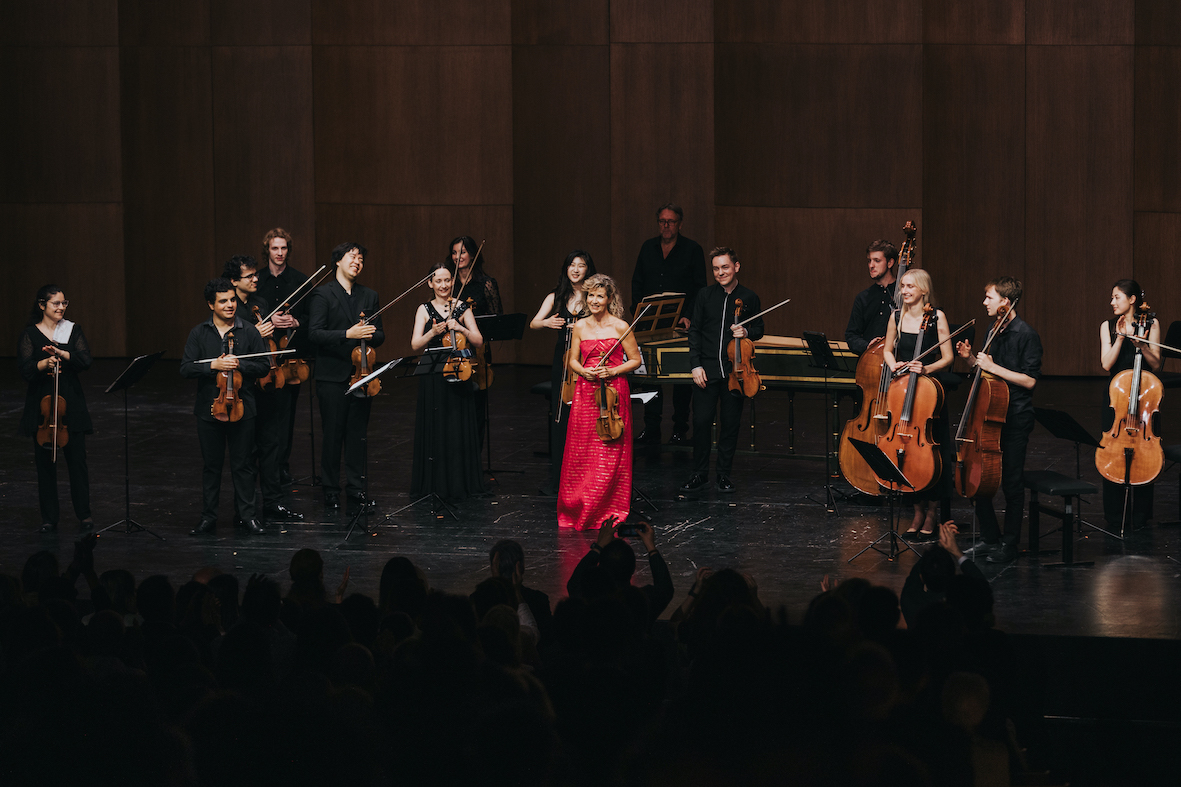
Ms Mutter and the Mutter Virtuosi
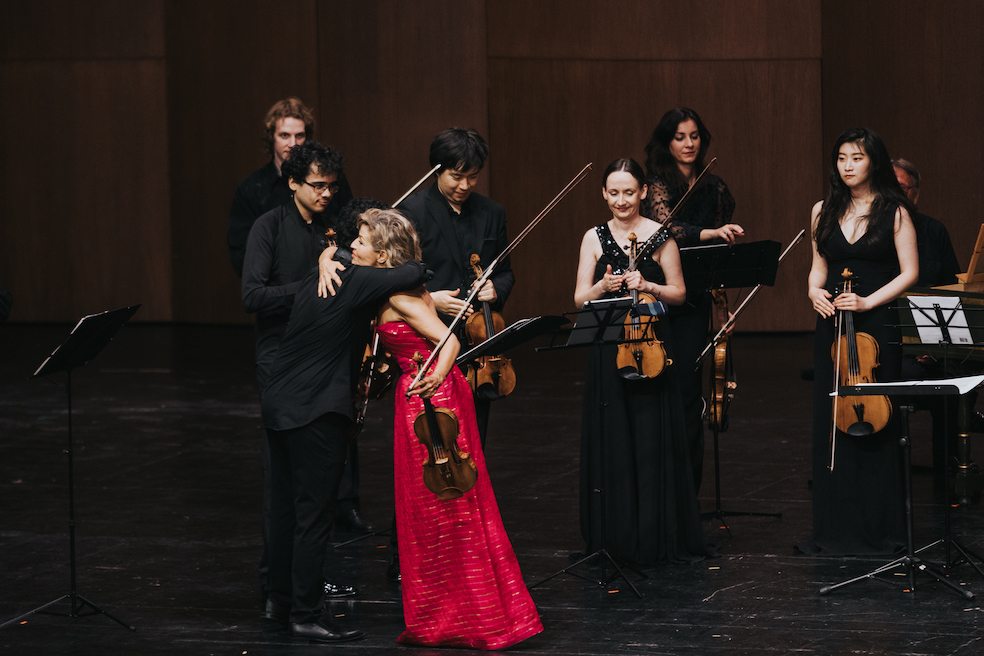
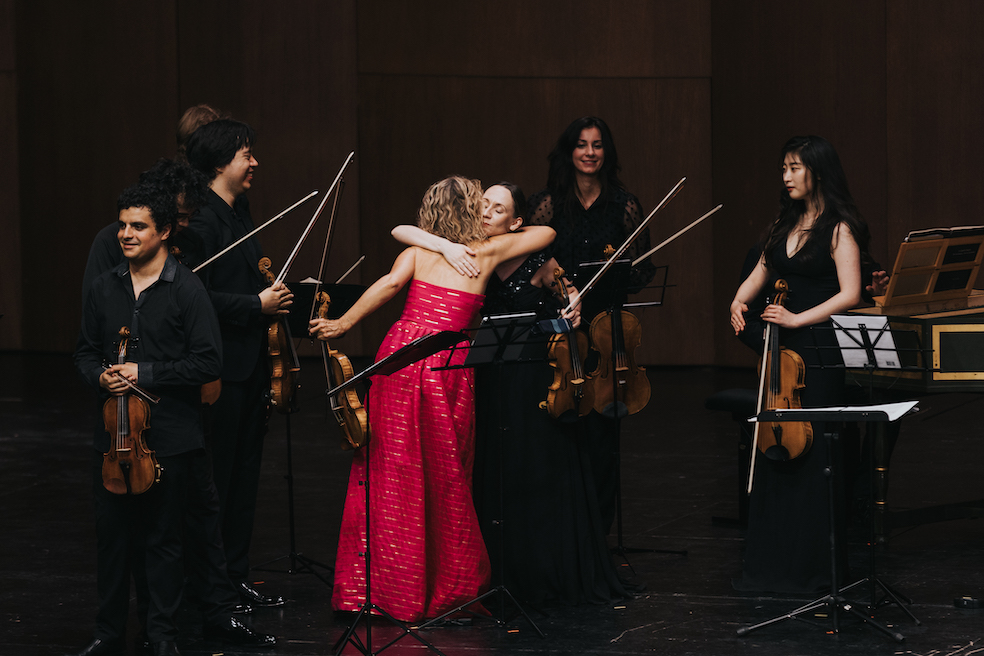
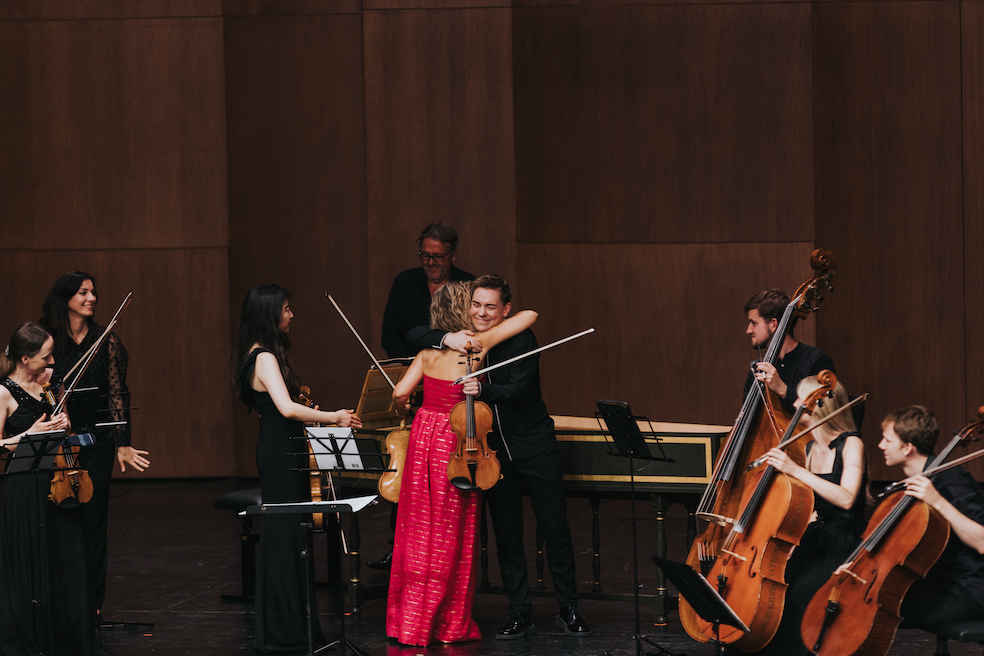
Three encores later… congratulations all round amid rapturous applause at the AKM on June 13 (photos Salih Üstundağ, courtesy of the IKSV)








